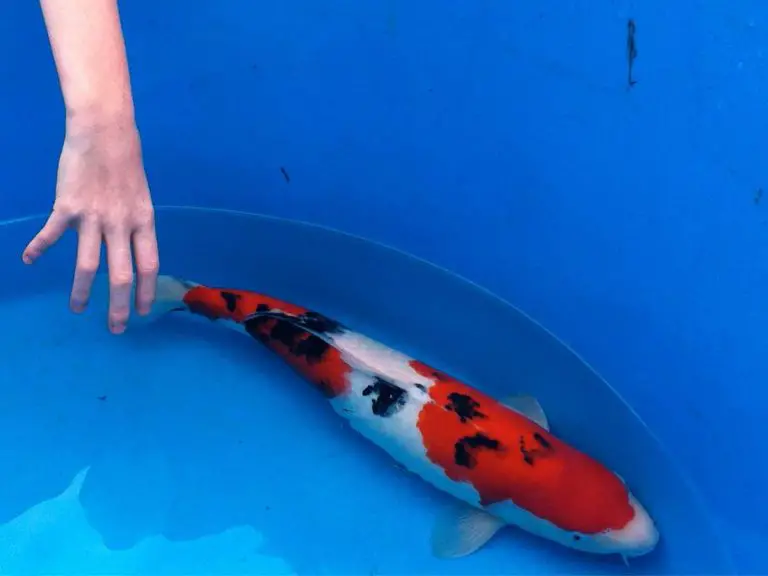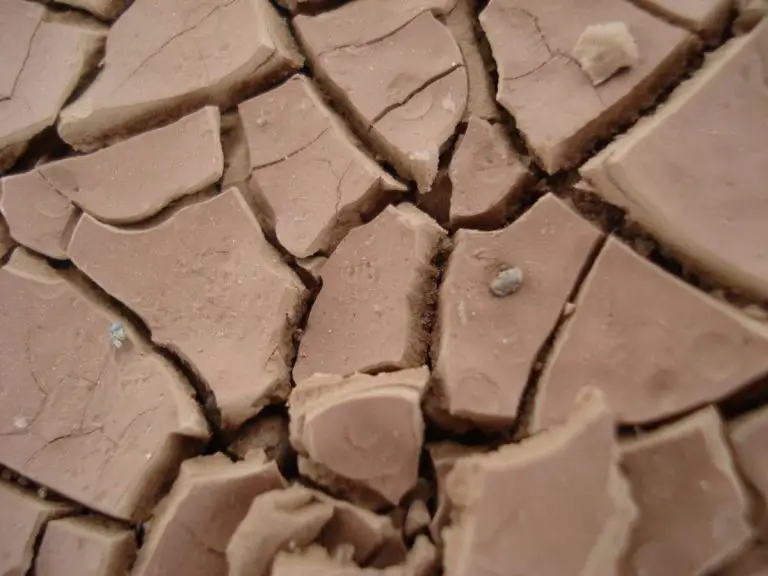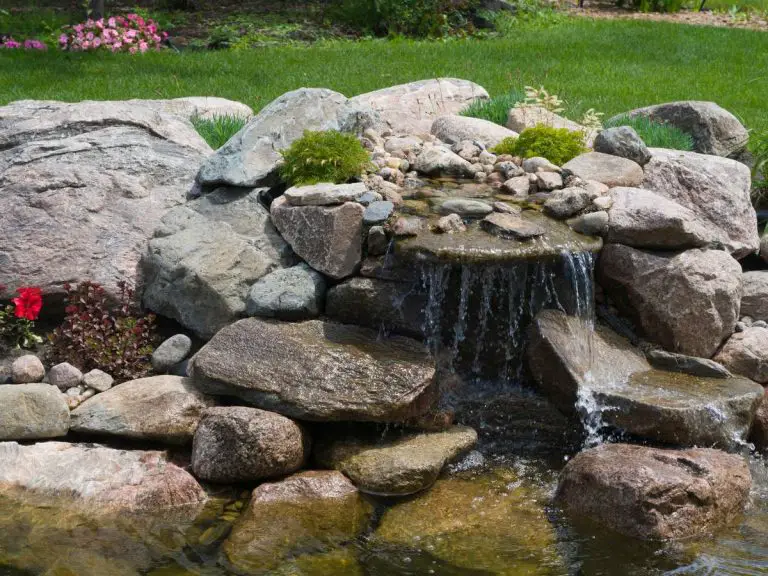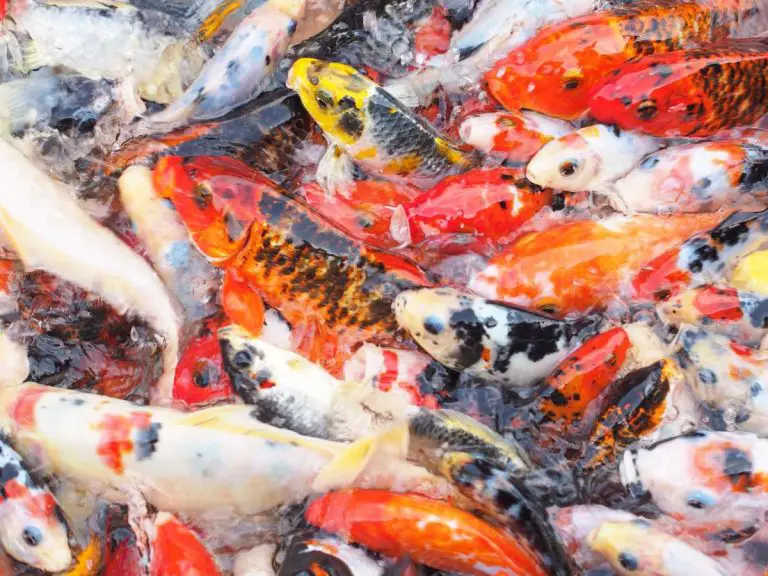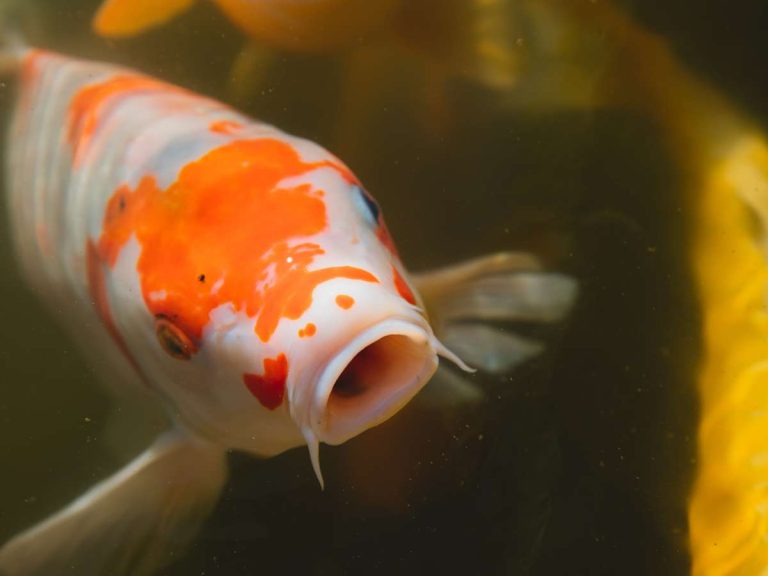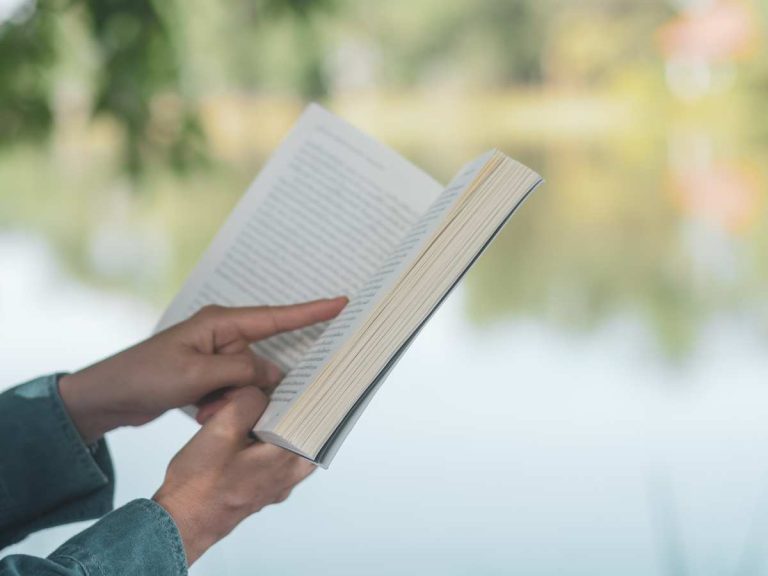What Koi Can And Can’t Eat: Here’s What To Feed Your Koi, And What To Avoid
Koi fish are a valuable addition to any pond or water garden. But ensuring their radiant beauty and health goes beyond just maintaining clear waters; it’s about understanding their dietary needs.
In the wild, koi have a smorgasbord of natural food sources, from insects to plant matter. However, in domestic settings, their diet becomes our responsibility. With a plethora of food options available, from commercial pellets to homemade treats, how do we discern what’s best for our finned friends?
This article will go into the world of koi nutrition, exploring the various foods they can and can’t eat, the benefits and drawbacks of different food types, as well as a few essential feeding techniques.
Whether you’re a seasoned koi keeper or a newbie, this guide aims to equip you with the knowledge to ensure your koi thrive in all their colorful glory.
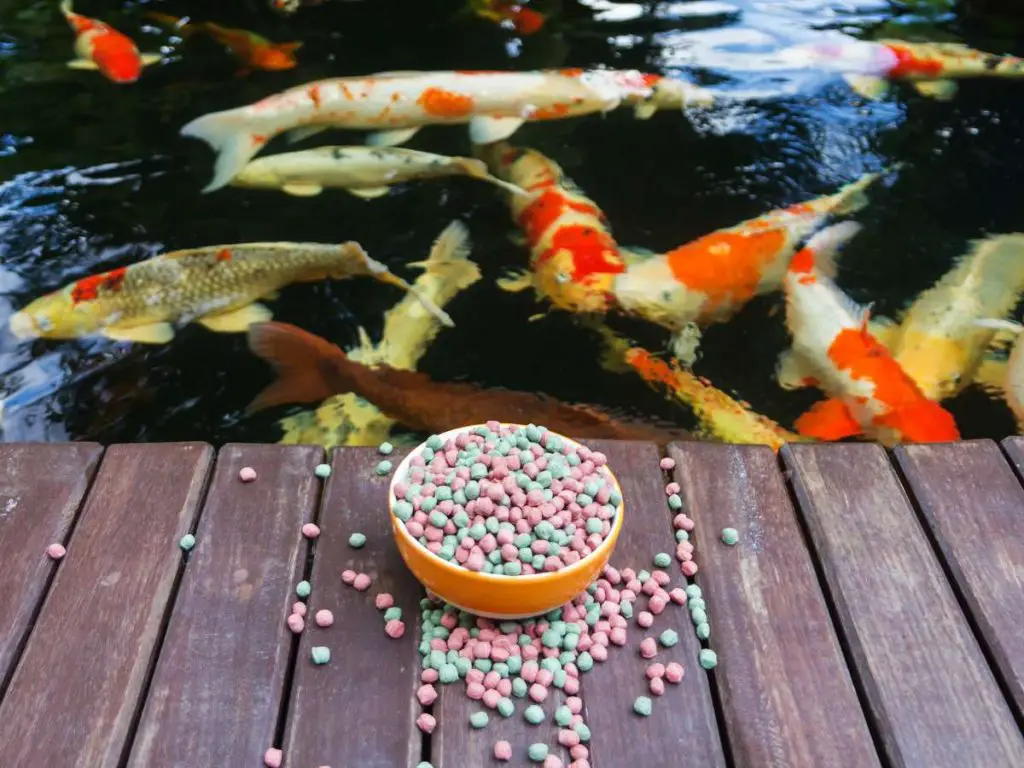
What Can Koi Eat?
It’s important to understand the dietary needs of your Koi to ensure their overall health and well-being. A balanced diet is crucial for koi fish, just like it is for us humans.
In the wild, koi fish have a diverse range of food options. They typically feed on insects, worms, crustaceans, and even plant matter. This variety of natural food sources helps provide them with essential nutrients and vitamins necessary for their growth and survival.
However, when it comes to domesticated koi fish, it’s essential to provide them with a diet that meets their nutritional requirements. Luckily, there are plenty of options available for koi fish food.
To help you understand the nutritional value of different food options, let’s take a look at this table comparing some commonly used foods for koi fish:
| Food Option | Nutritional Value |
|---|---|
| Commercial Koi Fish Pellets | High in protein, contains essential vitamins and minerals |
| Frozen or Freeze-Dried Foods | Varies based on specific food type, can provide a good source of protein |
| Fresh Vegetables and Fruits | Can provide a source of vitamins and minerals, but may be low in protein |
| Insects and Worms | Good source of protein, but may require additional supplementation |
| Homemade Koi Fish Food | Depends on the ingredients used, can be customized to meet specific nutritional needs |
What Koi Can’t Eat
Here’s a reference table of foods and substances that koi should avoid:
| Food | Reason Koi Can’t Eat It |
|---|---|
| Bread | Can cause bloating and digestive issues; lacks nutritional value. |
| Meat & Poultry | Difficult for koi to digest; can introduce harmful bacteria to the pond. |
| Milk & Dairy Products | Koi cannot digest lactose. |
| Salted Foods | Excess salt can harm koi. |
| Citrus Fruits | The acidity can affect the pH of the water. |
| Processed Foods | Contain preservatives and additives that can be harmful to koi. |
| Raw Potatoes | Difficult to digest and can cause blockages. |
| Onions & Garlic | Can be toxic in large amounts. |
| Chocolate | Contains theobromine which is toxic to most fish. |
| Caffeine | Harmful to koi and can cause heart problems. |
| Alcohol | Can be toxic and cause behavioral changes. |
| Foods with Pesticides | Residues can be harmful to koi and other pond inhabitants. |
| Spicy Foods | Can cause digestive issues and discomfort. |
As you can see, while koi can eat a variety of foods, their primary diet should consist of high-quality koi pellets or sticks designed to provide them with all the necessary nutrients.
Offering occasional treats like fruits (non-citrus), vegetables, and live foods can be beneficial, but always ensure they are safe and free from pesticides or other harmful substances.
Suitable Food Options for Koi Fish
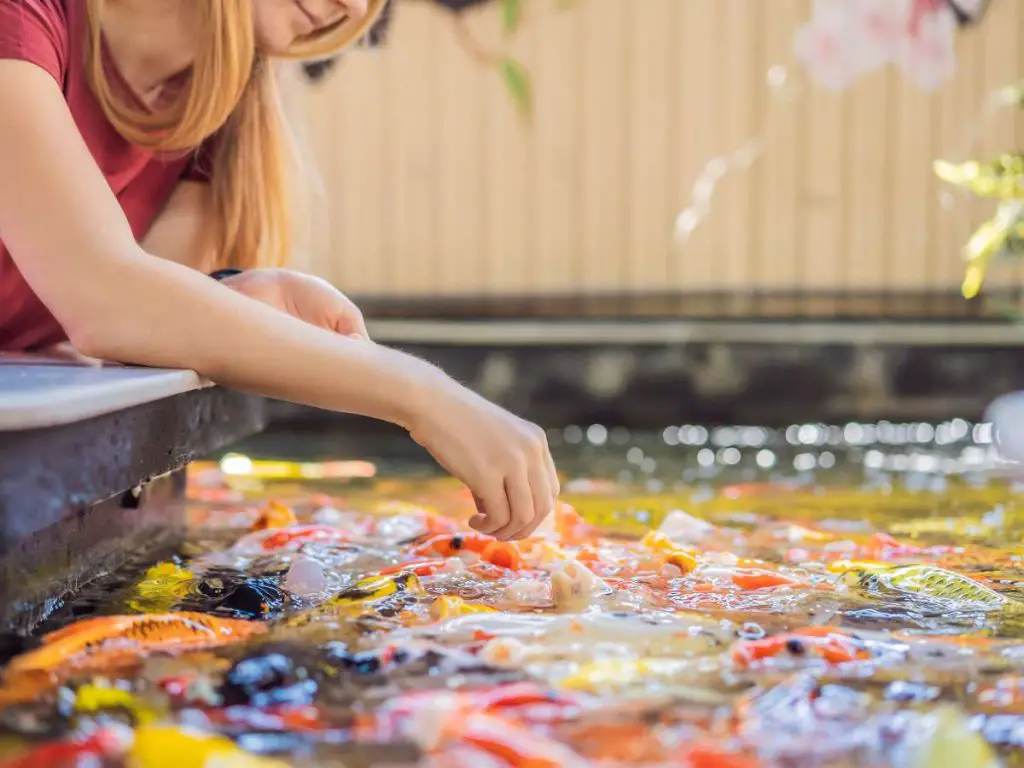
When feeding your koi fish, you have plenty of options to choose from. Let’s explore some suitable food options for our colorful friends.
Commercially available koi fish food
If you’re looking for convenience and a balanced diet for your koi fish, commercially available koi fish food is your best bet. There are many brands and types to choose from, but it’s important to select high-quality options. Some recommended brands include Hikari, Tetra, and Omega One. These brands offer a variety of formulas that cater to different dietary needs and growth stages of your koi fish.
| Attribute/Brand | Hikari | Tetra | Omega One |
|---|---|---|---|
| Quality | Middle | Lowest | Highest |
| Ingredients | Fish meal, Wheat flour, Flaked corn, Gluten meal, Brewer’s dried yeast, Krill meal, Spirulina, Sucrose esters of fatty acids, Dehydrated alfalfa meal, Dried seaweed meal | Fish meal, Dried yeast, Ground brown rice, Shrimp meal, Wheat gluten, Feeding oat meal, Fish oil, Potato protein, Dehulled soybean meal, Soybean oil | Whole Salmon, Halibut, Seafood Mix (Including Krill, Rockfish, & Shrimp), Wheat Flour, Wheat Gluten, Fresh Kelp, Astaxanthin, Lecithin, L-Ascorbyl-2-Phosphate (Source of Vitamin C), Natural and Artificial Colors |
| Comments | Somewhere between Tetra and Omega One in quality. Uses corn, which is hard for fish to digest | Uses by-products, which means non-edible parts of fish are used. If fed exclusively, can lead to problems such as lateral line disease in fish | Uses whole fish/shrimp/krill. Considered top quality alongside NLS |
When selecting commercial fish food, consider factors such as the protein content, ingredients, and customer reviews. Look for options that contain a good balance of protein, fats, and vitamins. Also, opt for food that is specifically designed for koi fish to ensure optimal nutrition.
Homemade options for koi fish diet
If you prefer a more hands-on approach or want to provide your koi fish with a natural diet, homemade food options can be a great choice. Here are a few easy recipes you can try:
- Vegetable mix: Blend together vegetables like lettuce, peas, carrots, and spinach. You can add some fish oil for added nutrition.
- Rice and shrimp mix: Cook brown rice and mix it with cooked shrimp. This recipe provides a good balance of carbohydrates and protein for your koi fish.
- Fruit salad: Chop up fruits like watermelon, grapes, and oranges. Your koi fish will enjoy the sweet treat!
Homemade food allows you to have control over the ingredients and freshness, but it’s important to note that it may not provide all the necessary nutrients. In addition, it can be time-consuming to prepare and may not be as convenient as commercial fish food.
Specialized Koi Fish Diets
Koi fish owners who want to promote specific traits in their prized pets can consider specialized diets. These specialized diets are designed to enhance koi fish growth and coloration, resulting in more impressive and vibrant fish.
High-protein diets for koi fish growth
If you’re looking to promote growth in your Koi, a high-protein diet is the way to go. High-protein foods provide the necessary nutrients for koi fish to develop strong muscles and reach their full potential. Some great high-protein food options for koi fish include:
- Worms: Koi fish love feasting on live or freeze-dried worms, which are packed with protein. Earthworms, bloodworms, and blackworms are all popular choices.
- Shrimp: Frozen or fresh shrimp are an excellent source of protein for koi fish. They also provide essential amino acids that support growth and muscle development.
- Krill: These small crustaceans are nutritious and rich in protein. Krill can be fed to koi fish in either freeze-dried or frozen form.
It’s important to note that while high-protein diets can promote growth in koi fish, they should be supplemented with a balanced diet to ensure overall health. Overfeeding with high-protein foods can also lead to water quality issues, so moderation is key.
Color-enhancing diets for vibrant koi fish
For koi fish enthusiasts looking to enhance their fish’s vibrant colors, a color-enhancing diet can do wonders. Certain foods are known to boost the intensity and brightness of koi fish coloration. Consider adding these color-enhancing foods to your koi fish’s diet:
- Spirulina: This blue-green algae is rich in carotenoids, which help enhance the reds and oranges in a koi fish’s coloration. Spirulina can be found in pellet or powder form and is a popular choice among koi fish owners.
- Marigold petals: Adding marigold petals to your koi fish’s diet can intensify their yellows and oranges. You can opt for fresh marigold petals or look for fish food that contains marigold extract.
- Astaxanthin: This pigment is commonly found in krill and shrimp and can enhance reds and pinks in koi fish. Look for fish food that includes astaxanthin as an ingredient.
It’s important to note that while color-enhancing diets can enhance a koi fish’s natural coloration, genetics play a significant role in determining the final colors. Additionally, maintaining good water quality and providing a balanced diet are still crucial for the overall health of the koi fish.
Feeding Techniques and Tips for Koi Fish
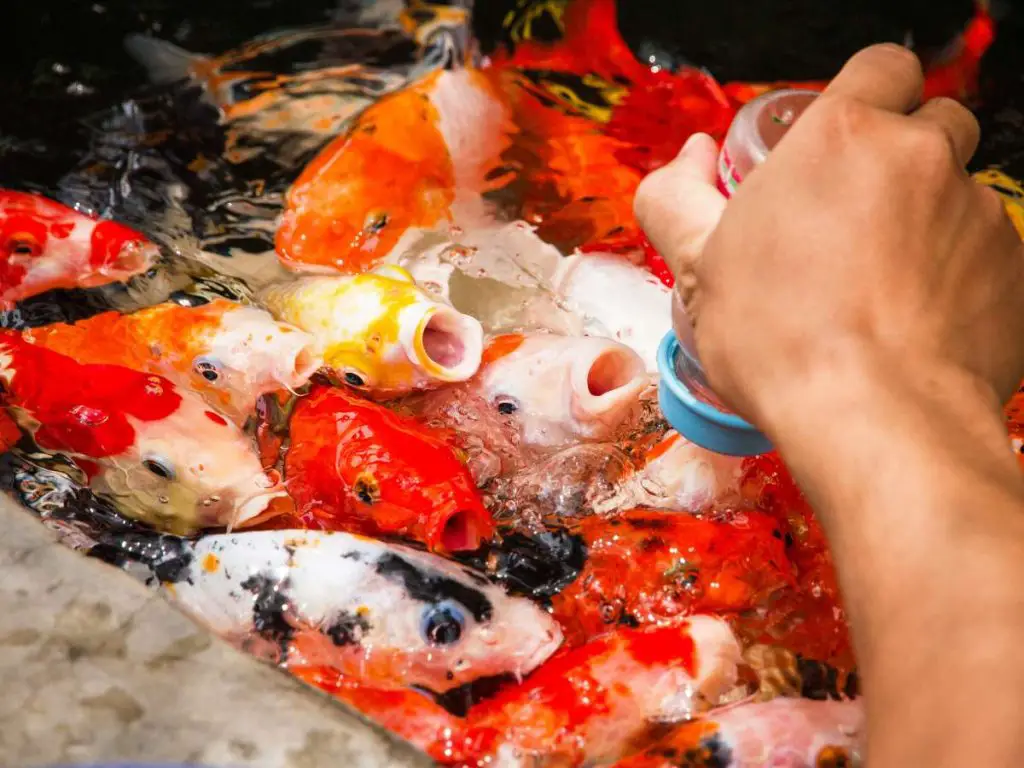
Feeding your koi fish is an essential part of their care, and understanding the proper techniques and tips can ensure their health and happiness. Here are some guidelines to follow:
Proper feeding frequency and portion sizes for koi fish
It’s important to establish a regular feeding schedule for your koi fish. Feeding them once or twice a day is generally sufficient. Remember not to overfeed them, as this can lead to health problems and water quality issues. Monitor their appetite and adjust the portion sizes accordingly.
Suitable feeding methods for koi fish
There are different feeding methods you can utilize to ensure your koi fish get their food effectively. Floating pellets are a popular choice, as they allow you to observe how much your fish consume. Sinking pellets can also be used, especially if you have fish that prefer to feed at the bottom of the pond. Just make sure the pellets sink quickly to avoid water contamination.
Tips for observing and adjusting koi fish feeding habits
Pay attention to your koi fish’s behavior during feeding time. They should actively swim towards the food and eat it without hesitation. If you notice any decreased appetite or abnormal behavior, it may indicate a health issue. Check the water quality and consult a veterinarian for advice on adjusting their diet or addressing any underlying problems.
Troubleshooting Koi Fish Eating Problems: Identifying Feeding Issues
Keeping a close eye on your Koi’s eating habits is crucial. If you notice any signs of feeding issues, it’s important to address them promptly. Watch out for behaviors like sluggishness or the fish appearing disinterested in food. These are red flags that something might be amiss.
Potential reasons for lack of appetite or abnormal eating behavior
If your koi fish is not eating as it should, there could be a few potential reasons behind this. One possibility is water quality. Poor water conditions can negatively impact your koi’s appetite and overall health. Another common issue is overfeeding.
Feeding your koi an excessive amount of food can lead to digestive issues and a lack of appetite. Lastly, stress can also result in abnormal eating behavior in koi fish. Stressful situations such as overcrowding or a sudden change in environment can cause a loss of appetite.
Remedies and solutions for common feeding problems in koi fish
If you suspect that poor water quality is affecting your koi’s appetite, it’s important to test the water parameters and address any imbalances. Regular water changes and proper filtration can help maintain optimal conditions.
If overfeeding is the issue, adjust the amount of food you provide and consider implementing a feeding schedule. Feeding your koi smaller portions spread throughout the day can help prevent digestion problems and promote a healthy appetite.
Additionally, minimize stressful situations for your koi fish. Ensure they have enough space to swim comfortably and avoid sudden changes or disturbances in their environment.
Comparison of Feeding Options for Koi Fish: Cost and Nutrition
When feeding your koi fish, it’s essential to consider the cost of various food options. Commercially available koi fish food is a popular choice, but it can be pricey. On the other hand, homemade food recipes provide a more affordable alternative. However, keep in mind that homemade options might require additional time and effort on your part to prepare.
Comparison of nutritional benefits and drawbacks of popular koi fish food brands
There are numerous koi fish food brands available in the market, each with its own nutritional benefits and drawbacks. Let’s take a closer look at some popular options:
- Tetra: Tetra is known for its wide availability and affordability. However, a significant portion of its ingredient list consists of by-products and fillers. While it is fortified with vitamins and minerals, a diet made solely of Tetra flakes might not be the most nutritious option and can lead to potential health issues in fish over time.
- Hikari: Hikari offers a balanced nutritional profile, with ingredients like fish meal, krill meal, and spirulina. It stands somewhere between the high-quality offerings of Omega One and the more filler-heavy Tetra. While it’s a better choice than Tetra, it might not be as nutritionally dense as Omega One.
- Omega One: Omega One is highly regarded for its use of whole fish ingredients, such as salmon and halibut. This brand promotes vibrant coloration in koi and is known for its high protein content. It’s a top choice for many koi enthusiasts looking for a quality diet for their fish. However, it might be slightly pricier compared to other brands but offers excellent value in terms of nutritional content.
It’s important to consider the specific needs of your koi fish and choose a brand that aligns with those requirements. It’s always a good idea to consult with experts or fellow koi enthusiasts to get recommendations based on their experiences.
Considerations for individual koi fish dietary needs
Just like humans, individual koi fish can have unique dietary needs. Factors such as age, size, and activity level can influence their nutritional requirements. It’s crucial to observe your koi fish closely and make adjustments to their diet as needed.
If you notice your koi fish is becoming overweight, it may be necessary to reduce the portion sizes or opt for a lower-calorie food option. On the other hand, if your koi fish seems to lack energy or isn’t growing at an appropriate rate, a high-protein diet might be beneficial.
It’s a good idea to seek advice from experts or consult a veterinarian specializing in fish nutrition to ensure you’re meeting the specific dietary needs of your koi fish.
A New Diet Isn’t Always “Better” Diet: A Personal Perspective
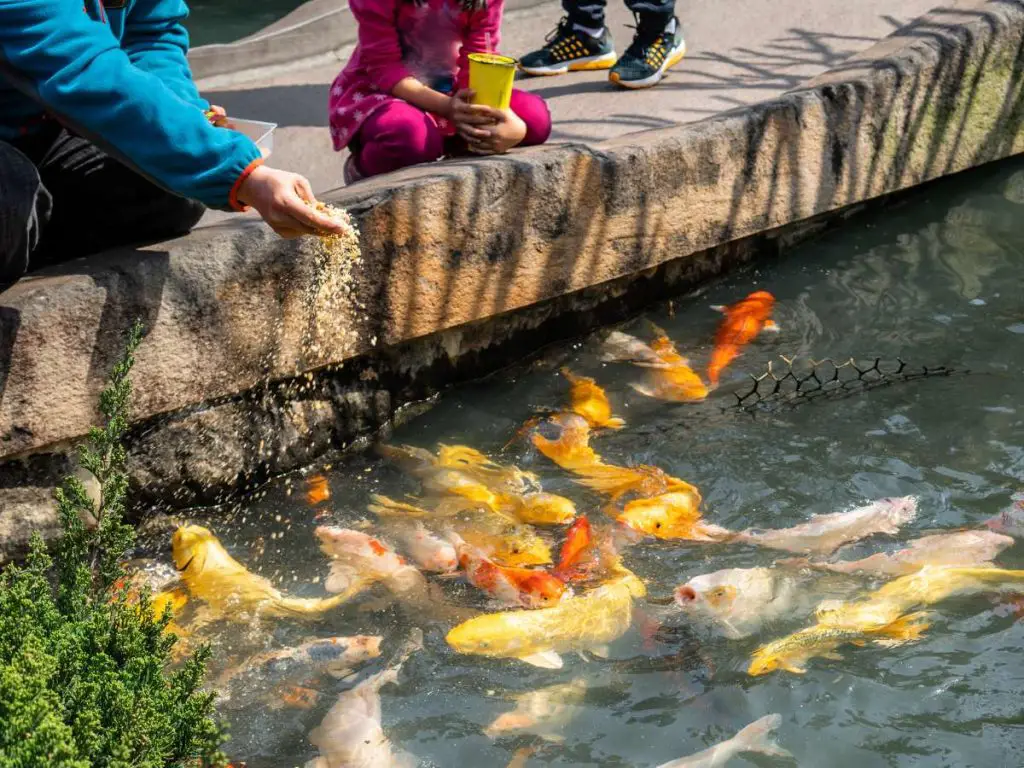
Some time ago, I decided to try a new diet for my beloved koi, Kuro. I had read about a new brand of koi food that promised enhanced coloration and faster growth. The reviews were glowing, and the before-and-after photos were impressive. Eager to see Kuro flourish even more, I decided to give it a shot.
For the first week, everything seemed fine. Kuro eagerly gobbled up the new pellets, and I was hopeful. But by the second week, I began to notice some changes. While his colors did seem a tad brighter, he wasn’t as active as he used to be. Instead of gracefully swimming around the pond and coming up to greet me during feeding times, he often stayed near the bottom, showing little interest in his surroundings.
I tried to convince myself that maybe he was just adjusting to the new diet. But by the third week, things took a turn for the worse. Kuro’s appetite decreased, and he started to show signs of stress, like erratic swimming patterns and gasping at the surface. I was alarmed and immediately consulted with a local koi expert. They suggested that while the new food might be enhancing Kuro’s color, it might not be meeting all his nutritional needs.
Without wasting any time, I switched back to Kuro’s original diet, the one he had thrived on for years. Within a few days, I noticed a positive change. His energy levels started to pick up, and he began to show interest in his food again. By the end of the week, Kuro was back to his old self, swimming joyfully and interacting with his pond mates.
This experience taught me a valuable lesson. While it’s tempting to try new things in hopes of better results, it’s essential to closely monitor any changes and trust your instincts. Kuro’s well-being is my top priority, and I realized that sometimes, sticking to what you know is best. I’m just grateful I caught the signs early and was able to ensure Kuro remained healthy and happy.
Final Thoughts
In this article, we explored the fascinating world of koi fish diet and learned all about what these beautiful creatures can eat.
From natural food sources in the wild to commercially available options, we discovered a variety of suitable food choices for koi fish.
We also delved into specialized diets for growth and color enhancement, as well as feeding techniques and troubleshooting common eating problems.
Key Takeaways:
- Koi fish can eat a variety of food options.
- They require a balanced diet for optimal health.
- Natural food sources for koi fish in the wild include insects, plants, and algae.
- Commercially available koi fish food is recommended, with key considerations when selecting a brand or type.
- Homemade food options can also be used, but there are benefits and risks to consider.
- High-protein diets can promote koi fish growth, but their impact on health should be monitored.
- Certain foods are known to enhance koi fish coloration, but caution should be taken when using these diets.
- Feeding frequency, portion sizes, and methods like floating and sinking pellets are important for proper koi fish care.
- Identifying signs of feeding issues and finding remedies can help solve common eating problems in koi fish.
- A cost analysis, nutritional comparison, and consideration of individual dietary needs can help choose the best feeding options for koi fish.
Now armed with this knowledge, you can provide your beloved koi fish with a healthy and fulfilling diet. Remember to monitor their eating habits and consult with experts in koi fish nutrition for further guidance. By ensuring proper nutrition, you are guaranteeing the well-being and beauty of your koi fish for years to come. Happy feeding!
Related Questions
Can koi fish eat fruits and vegetables?
Yes, koi fish can eat certain fruits and vegetables as part of a balanced diet. Some suitable options include peas, watermelon, oranges, and lettuce. It’s important to chop them into small, bite-sized pieces to prevent choking and monitor how the koi fish respond to these foods.
Is it safe to feed koi fish bread?
While koi fish may eat bread if offered, it is not a recommended food option. Bread provides little nutritional value and can lead to digestive issues and water quality problems in ponds. It’s best to stick to appropriate koi fish food options, both commercial and homemade, to ensure their health and well-being.

